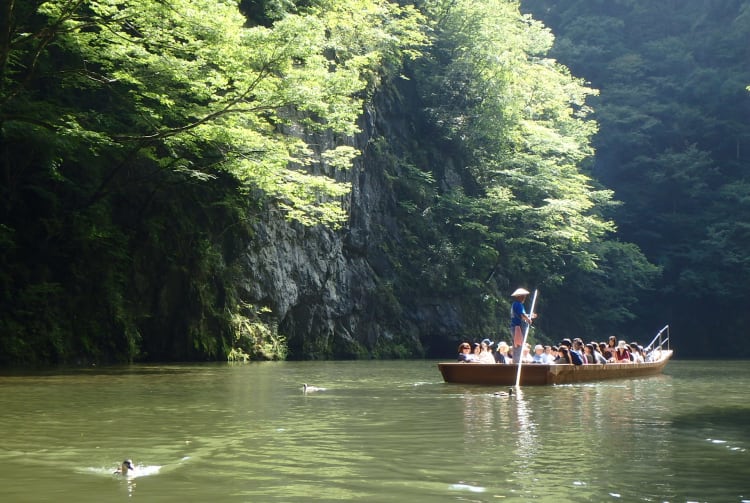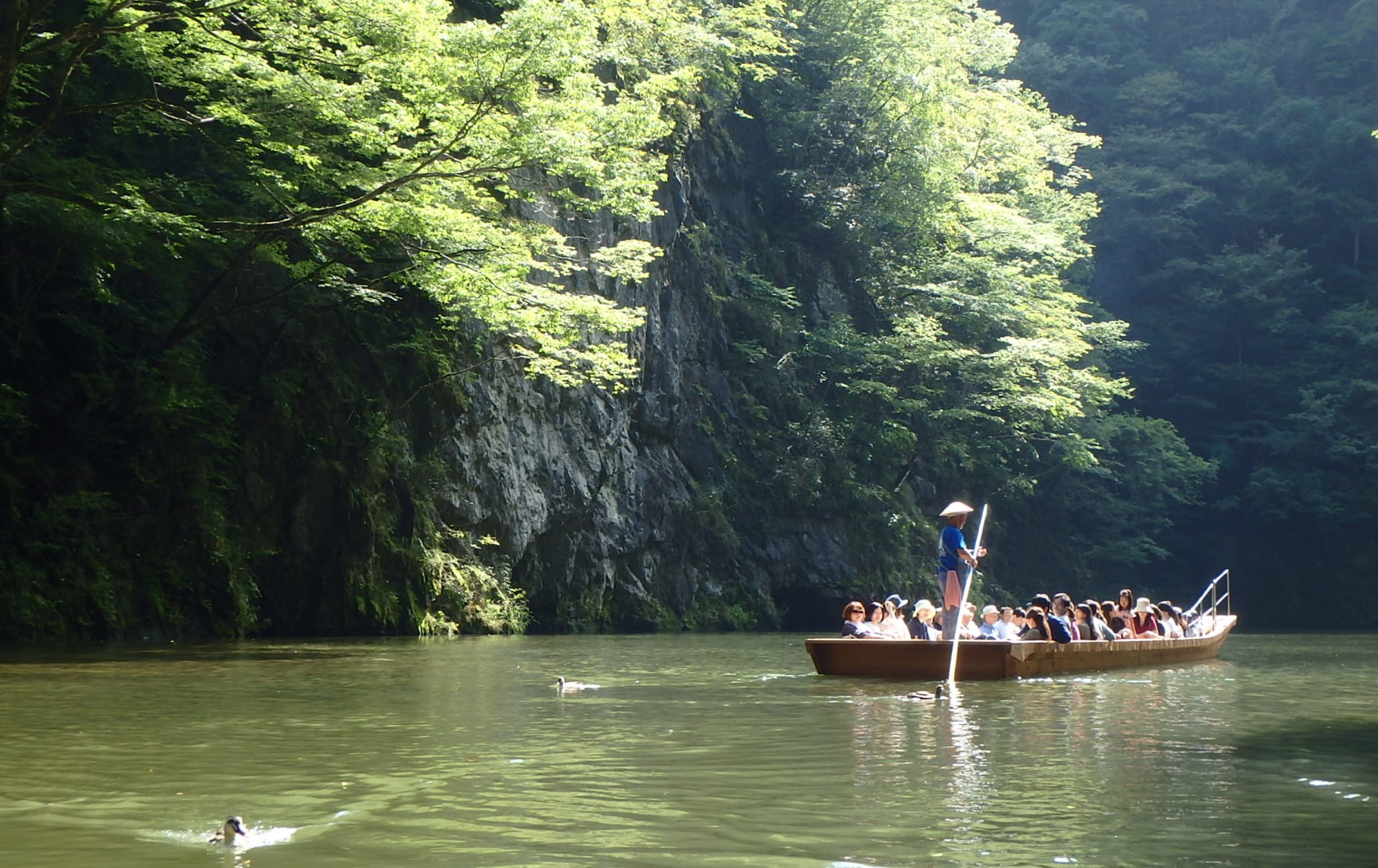Une paroi rocheuse en forme de nez de lion dans les gorges d'une rivière remplie de poissons
Les gorges de Geibikei ont été formées par l'érosion de la rivière Satetsu, à l'instar du Grand Canyon, mais à une échelle beaucoup plus petite. Aujourd'hui, des parois rocheuses de plus de 100 mètres de haut bordent les gorges de part et d'autre.
Anecdotes
Les gorges s'étendent sur deux kilomètres.
Geibikei a été désigné comme monument naturel en 1925
Comment s'y rendre
Les gorges sont accessibles en train, en bus ou en voiture.
La plaque tournante de transport la plus proche est la gare d'Ichinoseki, desservie par le shinkansen Tohoku et par la Tohoku Main Line. Le trajet en shinkansen depuis Tokyo dure environ deux heures et demie. À la gare d'Ichinoseki, prenez la Ofunato Line qui vous déposera à la gare de Geibikei en 30 minutes. Les gorges de Geibikei se trouvent à environ 8 minutes à pied de la gare. Vous pouvez également prendre un bus depuis le quai 3 de la gare routière de la sortie ouest de la gare d'Ichinoseki jusqu'à l'arrêt Geibikeiguchi. Comptez 42 minutes de trajet, puis environ 5 minutes de marche entre l'arrêt de bus et les gorges.
Entre avril et novembre, environ trois bus directs circulent de la gare de Hiraizumi sur la ligne principale Tohoku, vers les gorges de Geibikei. (À noter : les horaires sont susceptibles d'être modifiés lors des vacances et jours fériés, selon les années. Veuillez consulter le site officiel pour obtenir les dernières informations).
Le nez du lion
Entre avril et novembre, environ trois bus directs relient la gare de Hiraizumi sur la Tohoku Main Line aux gorges de Geibikei. (À noter : les horaires sont actualisés chaque année et les bus ne circulent pas certains jours. Veuillez toujours consulter le site web officiel pour connaître les dernières informations sur les horaires de passage avant votre voyage).
Nourrir les poissons
La rivière Satetsu regorge de poissons. Si vous remontez la rivière en bateau à fond plat, vous pouvez acheter de quoi les nourrir pendant votre excursion. Un autre type de poisson est cuisiné et vendu comme encas à l'entrée de Geibikei.
Un sanctuaire caché
Niché dans une petite grotte sur le côté droit de la gorge se trouve un petit sanctuaire. Le conducteur du bateau s'arrête pour que les passagers essayent de jeter des pièces dans l'urne de dons. Chaque pièce de monnaie, de 1 à 500 yens, émet un son différent lorsqu'elle touche le fond de la boîte. Si vous ratez votre coup, le seul son que vous entendrez est le rire des passagers.

















































